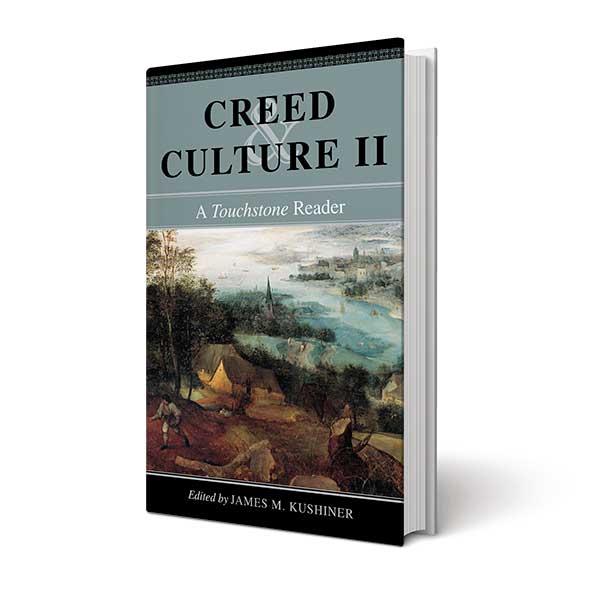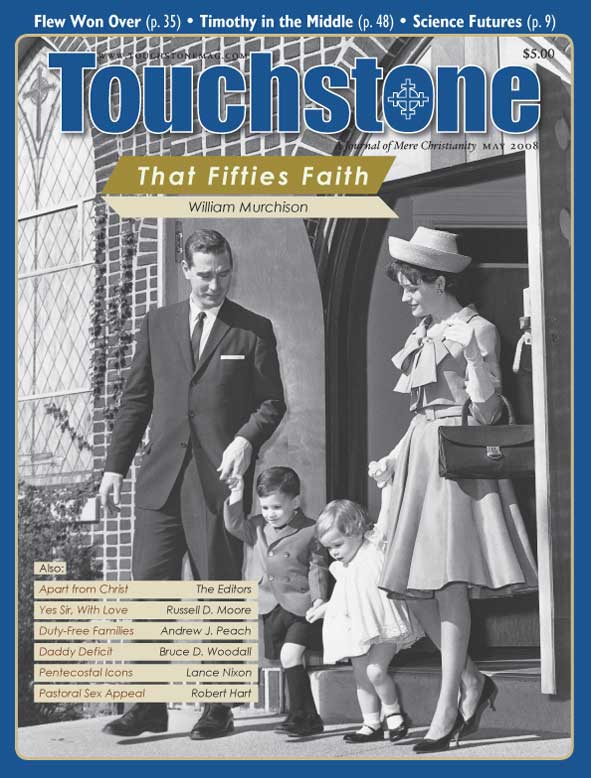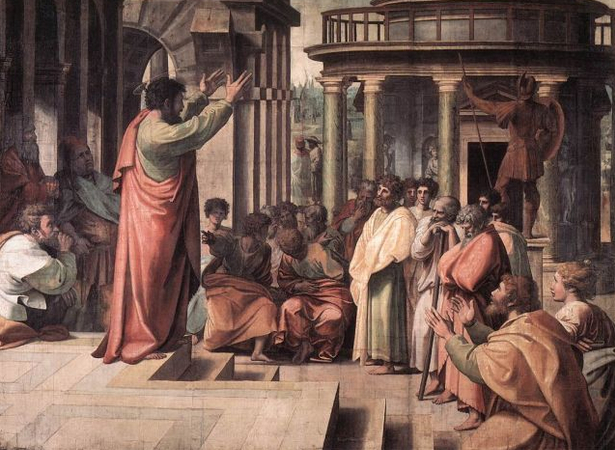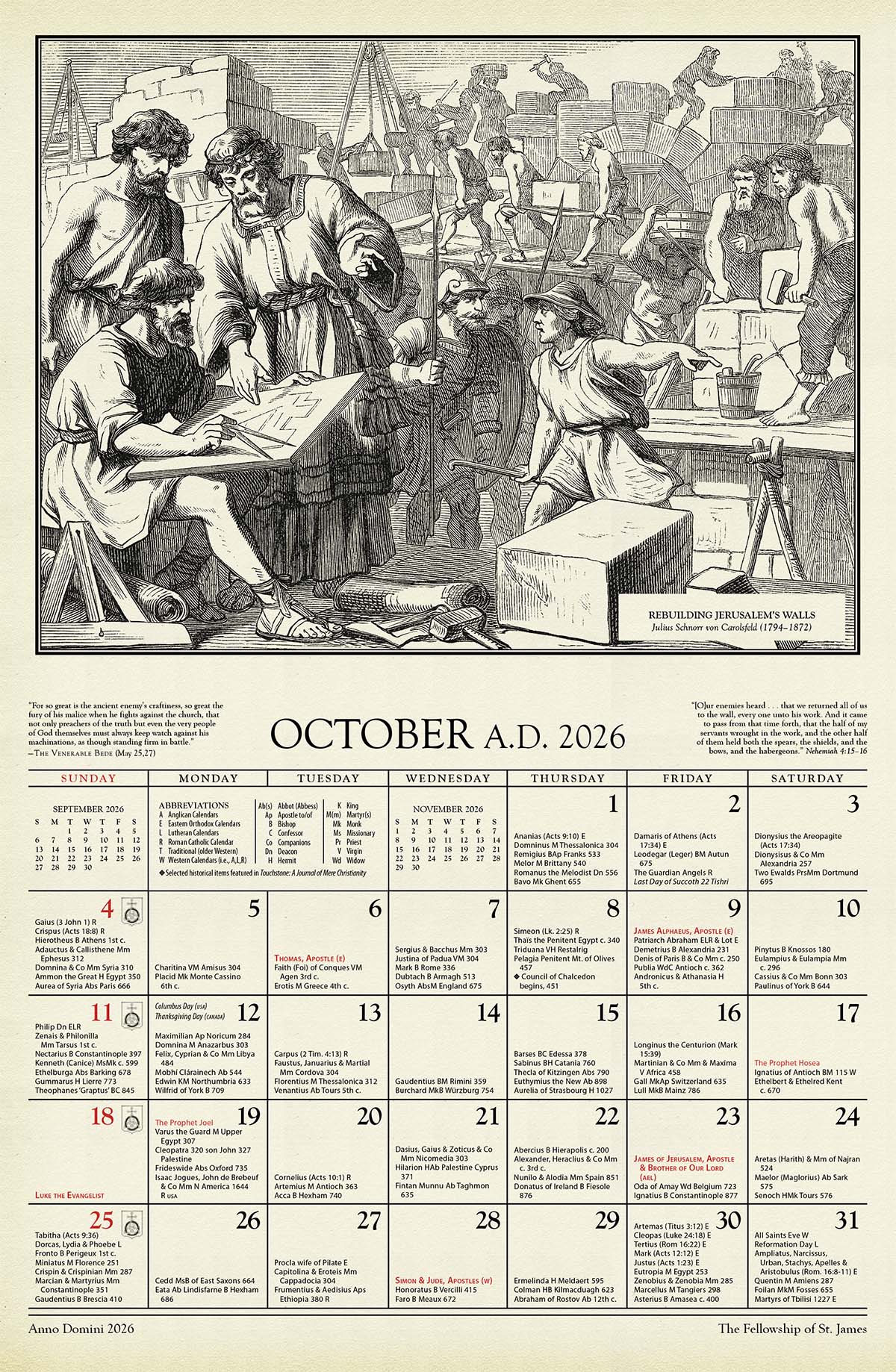Images of Redemption
Lance Nixon on Pentecostal Iconography
In West Bend, Iowa, a short walk from the motel room we’d rented, with its view of cornfields and white granaries, my wife and I and our children visited the Grotto of the Redemption. We followed a path that led us past the Stations of the Cross and other images arranged, in relatively simple mosaics and stonework, to focus the visitor’s mind on the message of Christianity.
How fitting that the Ruler of the Universe, born in a manger, should be celebrated amid Iowa corn and hog farms. There was a stark nobility about it that brought to mind how Thomas Merton, not yet a Roman Catholic convert, described the Byzantine imagery that impressed him in churches in Rome.
The imagery was “without pretentiousness, without fakery, and had nothing theatrical about it,” and “its solemnity was made all the more astounding by its simplicity—and by the obscurity of the places where it lay hid, and by its subservience to higher ends, architectural, liturgical and spiritual ends which I could not even begin to understand.” He could not avoid guessing at those ends, however,
since the nature of the mosaics themselves and their position and everything about them proclaimed it aloud. . . . For these mosaics and frescoes and all the ancient altars and thrones and sanctuaries were designed and built for the instruction of people who were not capable of immediately understanding anything higher.
Pentecostal Images
It was deeply moving, but for a Pentecostal like myself, also strange. I returned at the end of that vacation glad that I could appreciate the aesthetics of Catholicism, but also content that within my own tradition, we eschew the use of images. Or do we?
I’ve long felt that those who criticize the simplicity of Pentecostal worship choruses don’t understand that they function in just the way Thomas Merton described those Byzantine mosaics. They fill a clear liturgical need that progresses from praise into worship, in very simple terms and imagery that any blue-collar worker can understand.
But it occurred to me after our trip to the Grotto that we Pentecostals (and Evangelicals, too) do, in fact, use “real” images in worship. At least in many churches, they are there every Sunday in the pictures projected onto screens at the head of the church, along with the words to our choruses. We just don’t think of them as “images” or use that term for them.
These “motions” or “backgrounds” usually show people worshiping, the cross, or scenes of nature. Looking at one distributor’s website, I see one that shows a man skylined against a line of hills flooded by sunlight and another that shows a man bowed forward on his knees in prayer in a church with sunlight falling on him from a deep narrow window.
Others show a worshiper with his arms stretched wide in a t-shaped, crucifixion gesture against a sunset sky; a man with outstretched arms standing on a rocky shore pounded by the ocean; a woman at the edge of a meadow, her arms lifted in praise; a man with his arms spread wide against a backdrop of clouds. Another shows a congregation with hands lifted; another is simply an image of hands held open toward heaven; yet another shows a woman with her clothes billowing in the wind and her arms slightly behind her, bathed in sunlight.
If I had to try to put into words the theme of these images, it might be that worship is a way of life, that it takes place regardless of setting, and that fervency, honesty, and humility in worship is desirable. I don’t think any of that is specifically Pentecostal or Evangelical.
What these images depict may in fact be a visual equivalent of a prayer of Thomas à Kempis in The Imitation of Christ:
Wherefore, I offer and yield to You also all the praise of devout hearts, the burning affections, the enraptured thoughts, the spiritual illuminations, the heavenly visions, with all virtues and praising done or to be done by any creature in heaven or on earth . . . that You may be worthily praised and glorified forever.
A Very Old Trend
Yet this trend raises questions: Can a style of worship be exalted instead of that which its practitioners profess to worship? Could worshipers, in a sense, end up worshiping themselves worshiping, and is that what is going on when we display these images at the front of our congregations?
During the two years in which I tried to attend a non-Pentecostal church, that was the complaint I heard from non-charismatic Evangelicals. They were bothered by what they perceived as the Pentecostal/Charismatic influence in their own worship services, both in the worship choruses they chose to sing, with words about lifting up hands and dancing and bowing down, and in the accompanying worship backgrounds. A particular style of worship can become an idol, one man said during a Sunday school class.
That may be true, perhaps in other traditions as well as my own—yet I don’t think that’s what is happening here. After all, one of the names for these pictures is “backgrounds”—they are only aids to worship, not the focus. This “new” trend might be at least as old as the Psalms, an endorsement of specific postures and acts that reflect the deep yearning of the human being to be a creature who worships the Creator and serves as the high priest of creation.
So while I find myself thinking that I align with Luther’s position on images—we are free to have them or not have them, but they are not to be worshiped, they are unnecessary, and we would be better off without them—yet I find that, in practice, my tradition is actually using images in worship in a way that traditions older than Protestantism might sanction.
For instance, in The Ascent of Mount Carmel, St. John of the Cross comes out against those “pestilent men” who have tried to get rid of images, then seems to describe the right way to use images so that they will help, and not hinder, the believer:
We simply explain the difference between images and God. We exhort men to pass beyond that which is superficial that they may not be hindered from attaining to the living truth beneath it. . . . For means are good and necessary to an end; and images are means which serve to remind us of God and of the saints.
A Baptist friend with whom I’ve discussed this issue tells me that his church uses those same contemporary images I’m familiar with in worship, but he insists that such use is different from the way Catholics and Orthodox use images—the focus is not in any way on the image. Yet I don’t see how he and I can quarrel with the thought that these images are meant to do in our churches precisely what John of the Cross describes: to remind us of God and of the saints.
Ordinary Saints
Perhaps that is also what Albrecht Dürer’s famous images from about the time of the Protestant Reformation were meant to do. In fact, the most successful worship “background” of all time might be Dürer’s brush drawing of praying hands. He made it as a study for an altarpiece in 1508, exactly 500 years ago, and the title of the work is instructive: “Hands of the Apostle.” Clearly it is an image meant to remind us of one of the saints.
To the degree that John of the Cross is correct and that this is a fitting use of images, there might be room for such pictures in the altarpieces of our own day—though of course we will differ in how we define the saints. I take my definition from Paul’s letters to the Corinthians, in which he addresses that quarrelsome, doctrinally challenged, imperfect bunch of enthusiasts as “saints.” We know a lot about their enthusiasm in worship, and it fits with what is portrayed on the worship “backgrounds” deployed each Sunday in a great many Pentecostal and Evangelical churches.
The early German Romantic poet and novelist Novalis, with his Catholic and Moravian roots, expresses the reservation that I feel toward images. In his novel Henry Von Ofterdingen, he has Henry’s father say:
Our present-day miracle-working images have never edified me especially, and I have never believed the great deeds our divines credit them with. However, anyone who wants to may derive edification from them, and I am careful not to make another stray from his faith.
What is endearing about the Pentecostal and Evangelical use of images is that they are of ordinary individuals, virtually anonymous, with nothing remarkable about them or the way they are dressed. The point is not to be able to identify them as individual “saints,” as with icons. In fact, the point seems to be not that the “saint” is worthy of honor or veneration, but that God is. The God who is worshiped is the unseen focal point of all those images of worshipers.
In their postures I believe I see modern Pentecostal and Charismatic influence. I think so because in the non-Pentecostal churches I have attended, people sing the songs, but most do not lift their hands or kneel or do the other things the songs they sing (and the images they see) endorse as part of worship. To see that, you have to drive a few blocks to your nearest Assemblies of God church or the local non-denominational Charismatic church.
Yet I wonder if there is also in these images a visual allusion to older monastic traditions, though couched in modern terms. For the images often show a man or woman in some natural setting, occasionally in some chapel, but often alone.
It brings to mind what the Pentecostal theologian Simon Chan has written, in speaking wistfully of the ideal Pentecostal ascetic, who may or may not exist:
Pentecostal ascetics are no less rigorous than the desert monks in the school of prayer. But unlike their desert counterparts, their solitude is not achieved by physically removing themselves from the human community. Through glossolalia they practice mental solitude. They withdraw into the desert within and enter into a personal intimacy with God.
Essential Worship
The genius of these worship images seems to me to be that they allude to both twenty-first-century Christian spirituality (by the acts or postures of worship) and to older traditions of monasticism (by the natural or wilderness settings). And there, I think, is the common ground.
For in essence, all of these images—whether they feature nature, the cross, or persons in some posture of prayer—are making a theological statement: Man is a worshiping creature. His main purpose is to worship his Creator and Christ his Savior, and in that life he finds fulfillment.
That is only saying in visual, positive terms what the Orthodox thinker Alexander Schmemann discussed in negative terms in an essay about worship and secularism:
Secularism, I submit, is above all a negation of worship. . . . It is the negation of man as a worshiping being, as homo adorans: the one for whom worship is the essential act which both ‘posits’ his humanity and fulfills it.
I suspect Pentecostals and Evangelicals will never build Grottos of the Redemption at the borders of Iowa cornfields. But we may share with older traditions a picture of what life in Christ is to be.
Lance Nixon is a freelance writer based in Pierre, South Dakota, where he attends virtual services of New Life Assembly of God Church and also visits Trinity Episcopal Church virtually. He is also a fiction writer, and his latest stories about the Great Plains appeared in the November 2020 and November 2019 issues of Gray's Sporting Journal.
subscription options
Order
Print/Online Subscription
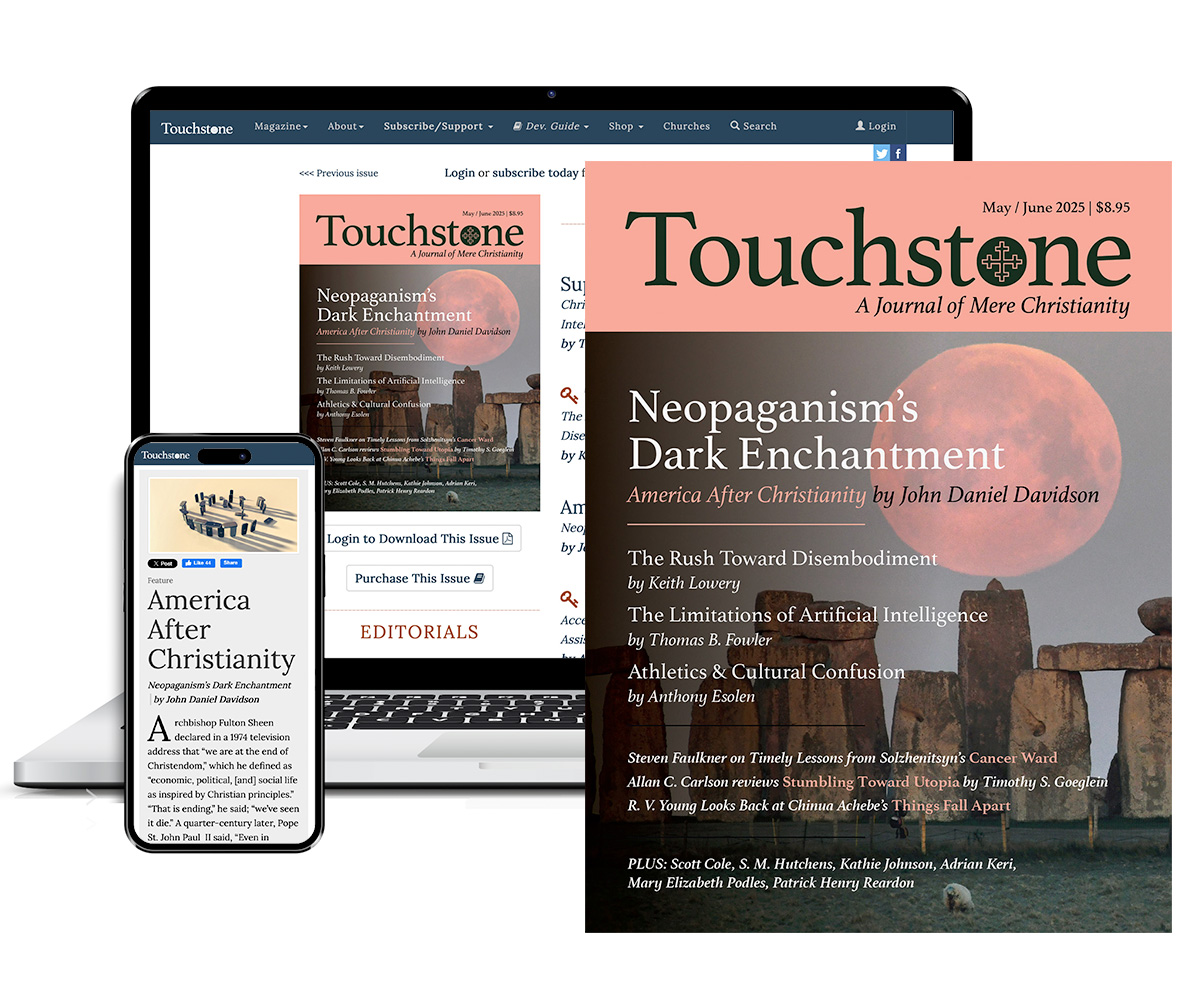
Get six issues (one year) of Touchstone PLUS full online access including pdf downloads for only $39.95. That's only $3.34 per month!
Order
Online Only
Subscription

Get a one-year full-access subscription to the Touchstone online archives for only $19.95. That's only $1.66 per month!
bulk subscriptions
Order Touchstone subscriptions in bulk and save $10 per sub! Each subscription includes 6 issues of Touchstone plus full online access to touchstonemag.com—including archives, videos, and pdf downloads of recent issues for only $29.95 each! Great for churches or study groups.
Transactions will be processed on a secure server.
more from the online archives
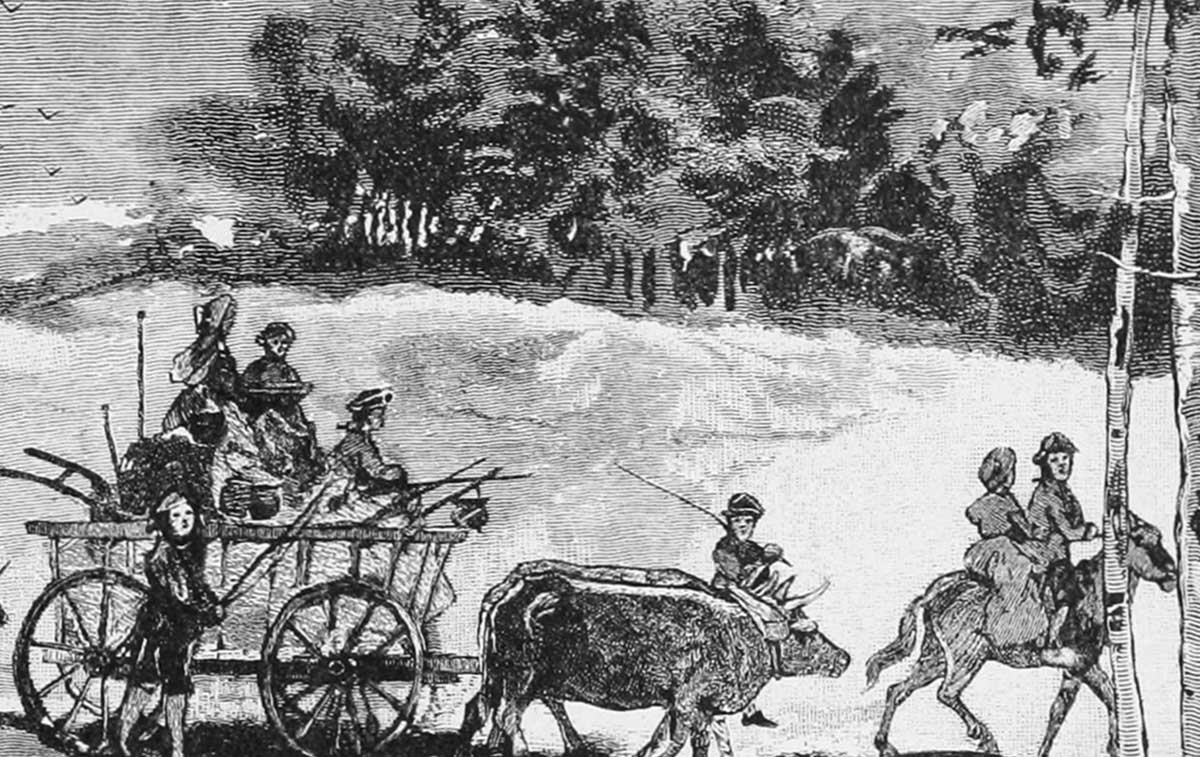
31.5—September/October 2018
Errands into the Moral Wilderness
Forms of Christian Family Witness & Renewal by Allan C. Carlson
calling all readers
Please Donate
"There are magazines worth reading but few worth saving . . . Touchstone is just such a magazine."
—Alice von Hildebrand
"Here we do not concede one square millimeter of territory to falsehood, folly, contemporary sentimentality, or fashion. We speak the truth, and let God be our judge. . . . Touchstone is the one committedly Christian conservative journal."
—Anthony Esolen, Touchstone senior editor




